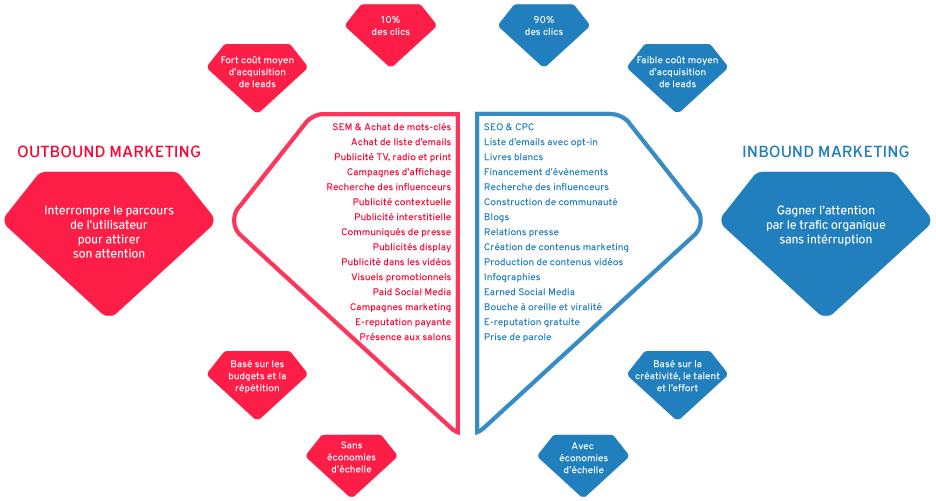At a time of digital business transformation and in a world that is increasingly connected and constantly searching for information, site redesign projects are commonplace.
Before thinking about "responsive site", visitor tracking and other technical parameters, have you thought about implementing your Inbound Marketing strategy?
Inbound Marketing, the cornerstone of your website redesign
Inbound Marketing is all about getting the customer to come to you instead of going out and getting them. How? By maximizing the incoming flow of visitors to your website, and then converting them into leads and customers.

The idea is to attract users to you, through your content and demonstration of your expertise.
This process differs from Outbound marketing strategies, which generally tend to interrupt the user.
Not only do Inbound marketing strategies work (93% of companies using it generate more leads and sales), but they generally perform better than Outbound used alone.
This is less and less effective in a society where consumers are bombarded with advertising.

Inbound Marketing vs Outbound Marketing
Site redesign and Inbound marketing strategy: together is everything
Why implement your website redesign project and the thinking around your marketing strategy at the same time?
It's simple, redefining your communications strategy and implementing an Inbound Marketing strategy are structural changes that will impact the way your site is built.
Here are some key points to consider in this process:
1 - Redefining the user journey through the conversion tunnel
The implementation of an Inbound Marketing strategy is based in particular on the reflection around the purchase process, which will be different depending on the target considered.
Your site must therefore be articulated to match the expectations and needs of different users, conceptualized as personas - semifictional representations of your ideal customer.
Your site should no longer just serve as your storefront, but as a true lead magnet, so the user journey must be optimized to facilitate conversion.
This thinking will impact many elements of the site, such as the tree structure, the internal mesh, the placement and phrasing of calls-to-action and contact forms, etc.
2 - The reflection around your editorial strategy
Inbound marketing is mainly based on the production of content for your target, so it is crucial that your site allows the enhancement of it, especially via landing pages, and this on all reading terminals (desktop, as tablets and mobiles).
Note that content doesn't necessarily mean endless blocks of text - in the age of 2.0, content is meant to be interactive and entertaining, in the form of infographics, videos, and so on, in order to hold the user's attention to the maximum extent possible.
3 - SEO
Who says content strategy, says SEO (search engine optimization, or how to make sure your site ranks well in search engine results).
In fact, to attract more visitors to your site, nothing beats optimal visibility in the search results of Google or other engines, which will help generate qualified traffic to your site.
The redesign of your site, beyond your Inbound marketing strategy, must therefore take into account the SEO imperatives, and tune them with the overall strategy.
The redesign project of your website is therefore the perfect timing for the implementation of an Inbound marketing strategy, whose implementation will be greatly facilitated by thinking ahead of the redesign.
So don't miss this opportunity to succeed in your digital transformation!









